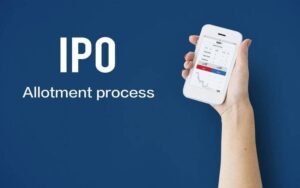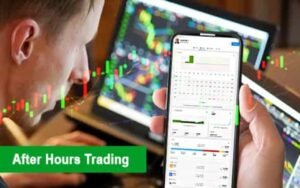What does buyer enablement mean?
The buying decision process, or customer decision journey, is the steps that lead a customer to purchase a product or service. The buying decision process is present in many industries, from retail to eCommerce. This journey flows through three stages: before, during, and post-purchase.
- Pre-purchase activities: Sales demos, product videos, and customer reviews help leads make an informed choice during buying. To show buyers how valuable a product is, you must also make content that speaks to their wants and pain points.
- Activities after the purchase: Buyer enablement continues by providing user guides, tutorials, and onboarding tools after the purchase. Depending on how complicated the product is, buyer enablement may include setup, deployment, software integration, and training for employees to get them to use the product and ensure it works right.
Tools and methods that improve the buying experience are also part of buyer enablement. Customers have to do several “buying jobs” during the sales cycle. These tasks have to do with buying. The buyer has to do it without help from the seller.
Some of these are:
Identifying the problem: “Situation X is a problem in our company, and we need to fix it.”
Find out “What causes Situation X, and how can a new product be the answer?”
Exploration: “What choices do we have that will make things better?”
Outlining needs: “What results do we want from the product or solution?”
Choosing a vendor: “Which dealer can give me the best solution?”
Purchase decision: “Does Vendor Y solve Situation X in the best way possible?”
Validation: “This seems like the right answer, but we need to be pretty sure.”
“Everyone needs to agree before we move forward,” said all parties.
According to a study from Gartner, 77% of B2B buyers say their most recent purchase was tough.
Helping buyers with the above tasks is what buyer assistance is all about. This makes the sales process faster and easier for them.
Synonyms
- buyer decision process
- consumer decision-making process
- customer decision journey
- buying journey
Sales Enablement vs. Buyer Enablement
- It’s important to note that sales and buyer enablement don’t always use the same tools and materials. Sales enablement helps sellers sell, while buyer enablement helps buyers buy.
- It gives sales teams the information and tools they need to make deals faster. This includes training, sales playbooks, making content (like sales materials), and using tools that make the sales process easier.
- Buyer support makes it easier for buyers to do one or more of the tasks listed above.
- The information and tools that help sellers close deals faster are sometimes the same ones that buyers use to learn more about what they want to buy.
- A salesperson might use a case study to show off a product. The case study is meant to show them how helpful the product is, connect with them, and show what they might be able to do with it. This time, it’s information that helps with sales.
- Let’s say the seller ends the call and emails the case study to the buyer. They send it to other people in their group on their own time to get agreement. That same case study is now material that helps buyers.
Why buyer enablement is essential in the customer journey
- Buyer support is most important for business-to-business purchases, which usually take more than two months and involve six to ten people.
- The Lack of Communication Between Buyers and Sellers
- In the customer trip, sellers and buyers do different things at different times.
- One in seven business-to-business buyers only spends 17% of their time with salespeople. Because all buying choices involve more than one supplier, the most time a buyer spends with any one company’s sales team is about 5% of the whole buying process.
- The things that salespeople need to do are different. They have to meet goals and build ties on their own. And they only sell things about a third of the time. The other two-thirds are spent gathering information, researching customers, answering emails, and keeping track of actions in CRM.
- It’s hard for sales reps to spend enough time with each buyer; most buyers want unique experiences. Buyer enablement is a crucial tool to bridge the gap.
Things that customers want are changing.
Aside from more people wanting customization, sellers also have to deal with several new preferences and requirements.
Forbes guest contributor and tech CEO Gary Drenik says that most of these choices are based on the move to self-service, which is becoming increasingly critical in the B2B buying process as millennials and Gen Z take over the workforce and makeup 65% of all B2B buyers.
Self-service means that you have more power over the buying process. People want to make intelligent choices, but they don’t want to talk to sellers or go on long, challenging tours of products unless they have to.
The following information and supplies are needed right away:
- Information about prices
- Choices to try before you buy
- Reviews from customers
- Demos and how-tos
- Case studies are
- Documents like white papers, files, and other useful stuff
Giving prospects the right tools ahead of time lets them do all the study they need to and then get in touch with sales when they’re ready. This is called “buyer enablement.”
The buying journey is focused on the Customer.
“Customer-centric” is the most important thing to remember about a buyer enablement plan.
For a business to be successful, its content needs to be tailored to each buyer’s specific wants and goals. Companies can make relevant and up-to-date materials that help buyers through the buying process if they know what information is needed at each step.
It could be:
- An instructional video about an object that shows how it works
- This ebook talks about essential business trends and how they impact buyers.
- A page called “FAQ” explains common questions and concerns.
Product guides and paperwork
Articles and white papers that talk about how the product can be used in business
For buyer support to work, sales teams need to be able to think like marketers. Every piece of content they put out should be carefully made for their buyer personas instead of just being general.
A better B2B sales process
Because the average sales cycle is so long and customers are generally unhappy with the complicated process, many B2B companies want to save time and money on sales.
Buyer support makes the process better by:
- Educating buyers ahead of time so they’re better prepared when they talk to sales reps
- Getting sales teams to respond faster and more accurately
- Lessening the use of manual study methods like product tours and demos in person
- It’s hard for sellers to explain how a product fits into a customer’s process, but you can show them.
- Getting information about customers to learn more about specific buyers and the business as a whole
- Making it more straightforward for buyers to get information even after the deal is over
- Knowing the Different Types of Buyers
People who buy come in four different types. Knowing how they react to different materials can help sellers determine the best way to sell each.
The Friendly Buyer
People who are friendly buyers like to work together and build relationships. They also like to trust others over time. For this reason, they might be ready to wait longer before making a purchase.
Even if a buyer is friendly, they might be unable to commit to anything. They might agree to demos and follow-up talks but not anything else.
It would be best to treat them like friends but make them feel they needeneedct quickly. Give people useful information at the right time to build trust and respect.
How to Buy Analytically
Analytical buyers are methodical and rely on data. Before making a choice, they like to think about all their choices. That’s why they like white papers and detailed product documentation that help them weigh the pros and cons of each option.
There are many great ways to get analytical buyers interested, such as through thought leadership material, datasheets, case studies, customer reviews, in-depth demos, and documentation.
This means buyers should focus on giving the most complete and unbiased information they can. Make the product look like the obvious choice.
The Person Driving
Drivers usually have a lot of power to make choices and like to use it. They move quickly and make choices quickly. They don’t want to waste time on things that aren’t important, so they like information that is short and to the point.
Sales reps should have short product demos or explanations ready when they talk to drivers.
For buyers, this means they should ensure their message is clear, brief, and convincing. Get ready to answer their questions quickly.
The Buyer With a Voice
Buyers who speak their minds want to be heard and want detailed information about a product that is tailored to their needs.
They tend to be more passionate than other buyers and want to do business with people who share their values and goals. Regarding material, they like stories that focus on a common goal.
For buyers, this means being clear about what they need to close the deal and giving it to them. Make them feel like they are the most critical Customer in the world.
How to Make the Buying Process Fair for Buyers
At different points in the buying process, buyers also need different ways to be sold.
Being Aware
At this point in the buying process, the buyer is first aware of a product or service. The most effective content is high-level educational content, like explainer videos, infographics, social media posts, and ebooks that discuss the product’s benefits and how it can be used in business.
At this point, there’s no need to make things too hard. At this point, some prospects aren’t ready for the product, so make sure the information is broad and easy to understand.
Think about it
Buyers are thinking about different options for meeting their needs during this time. This is when they look into specific features and see their competitors’ actions.
Sellers should give more in-depth information that answers questions like “How does this product compare to others?”And “What makes this item the best choice?”Use expert white papers, case studies, and customer stories.
They need information that helps them decide if a company’s product is right for them while thinking about it. Content specific to the industry will help buyers determine if the product or service is right for them.
Interested in
People who are interested in buying something and meet specific requirements are called marketing-qualified leads (MQLs). Now, a group can build a stronger connection with the other group.
At this stage, buyers want a unique sales experience and seek information from trustworthy people, like coworkers, friends, or industry experts.
In this stage, enabling them means giving them access to company culture, customer success stories, and product demos suited to their needs.
To choose
A potential is a sales-qualified lead (SQL) if they show interest, get the materials listed above, and decide that the company’s product is a good fit for them. Things are more important now that there is a real chance that the prospect will buy.
At this time, sellers need to deal with objections and ensure their product fits the prospect’s needs. Buyer-specific price models, feature demonstrations, and customer success stories are fundamental.
They want to feel like the company fully supports their buying choice.
Proof of existence
People who need to be sure are almost ready to buy something. These are the steps sellers need to take to get buyers to decide to buy without being too pushy.
A business could, for example, offer a free trial, sales discounts, or valuable content to help a buyer make a choice.
People selling something can also help buyers feel more sure about their purchase. This can come from how they act, know about the product, and dress.
In agreement
Customers who need to agree on something are primarily on board and must ensure that everyone else is, too.
It’s much easier for people to agree when a business uses buyer interaction software. When all the information (and communication between stakeholders) is in one place, it’s easier for buyers to choose a group.
To get ready for this step, sellers need to ensure that every person who makes decisions is always considered during the process.
There may still be office politics, last-minute choices, and objections. They should be ready for those and have answers that meet their buyers’ wants.
Get it now
Buyer support keeps going after a deal is “closed won.” People who buy a product need information and tools to help them get it up and going.
The seller should give buyers access to user guides, training films, customer service help (especially when starting first), and other valuable materials.
Companies also help their customers with complex products by offering professional implementation, onboarding, and system integration services. These services can be given by company-owned experts or by outside vendors.
Best Practices for Making It Easy for Buyers to Buy
It takes more than just putting out ebooks and hoping prospects find them to engage buyers effectively. In addition, businesses should know what their buyers want and make a program to help them get it.
Learn how the Customer decides what to buy.
For sellers to make sales, they need to know what kind of buyer they have and where the buyer is in the buying process.
Sellers should pay close attention to their prospect’s communication style, tastes, and behavior to determine what type of buyer they are (friendly, analytical, driver, or expressive).
Buyers who are friendly and value personal ties are likelier to buy something.
Analytical buyers pay attention to numbers and reasoning.
Driver buyers are focused on getting results.
Expressive buyers show feelings and excitement.
By paying attention to these social cues, sellers can change how they talk to each type of buyer and make it more effective.
Sometimes, it’s easy to tell what stage of the buying process a client is in.
It finds a prospect is already an MQL. Some will be easy times; sales reps need to talk to prospects directly by asking about their study, the alternatives they’re considering, and if they’ve looked at the website.
Sellers need to ask questions because it helps them connect with and understand their buyers as they move through the sales process.
Make it simple for people to buy things.
Reps should start the seller-facing part of the customer journey by being interested and asking open-ended questions that help them determine what the buyer is struggling with. Genuinely wanting to understand their wants is something that all great sellers do.
Here are some ideas:
- Please pay close attention to what prospects say and show them how the product fits with how they already do things.
- When you go on a sales pitch, ensure you have the information and tools you need to handle complaints or concerns.
- Be easy to reach during the whole buying process. 78% of business-to-business buyers say they buy from the first company that answers their questions. Being on time and ready makes you more likely to get their business and build a long-term relationship with them.
- Customized or personalized content should be used.
- Writing new blog posts and ebooks for each Customer is impossible, but making personalized movies and demos is possible.
- Personalized content, like video content, helps almost all businesses increase the number of people who buy from them.
- The best way to stand out from competitors and get more sales is to record Loom videos showing off product features that solve customer problems.
Buyers feel like they are essential when they get a unique demo. The most important thing is that they think the seller knows how to deal with their specific problems.
Tools to Help Buyers
In some ways, buyer enablement tools are like sales training tools. Sometimes, they don’t have anything to do with the seller.
These are some examples of tools that help buyers:
Article Content
Content is the most important thing when it comes to making buyers possible. Content that helps buyers includes:
- Posts on a blog
- Papers in white
- Case studies are
- Product literature, such as instructions and paperwork
- How-to guides
- Pages that compare
- Pages with products and prices
- Online meetings (webinars)
- How-to video clips
Throughout the process, buyers should be able to access the content quickly and quickly with an easy-to-use design, and a directory structure that makes sense is essential for a buyer enablement program to work.
Tools for Evaluation
Questionnaires, polls, and quizzes are all assessment tools that help buyers determine what they need and find the best product or service to meet those needs.
They should be built into the business website so visitors are automatically sent content or products related to their answers.
Calculators for ROI
It’s hard to do math. It’s not interactive graphics.
ROI calculators are great for services and goods whose value isn’t clear (like agency work) and SaaS products whose value can be measured.
Customers can use these tools to see how much money they might make without asking a salesperson to explain it.
How to Compare Things
Before choosing one, every buyer will look at a number of them. They may do it on the company website, a third-party site like G2 Crowd, or even a competitor’s page based on where they find it first.
If you let buyers compare goods and services on one page and make it easy for them to do so, you’re more likely to get their business.
Video Demos
At different points in the buying process, sales demos are helpful. As they get closer to making a choice, more customization is essential to seal the deal.
Demos can be sent through videoconferencing software or a screen recording; ideally, both should be used.
The DealRoom
DealRoom is software made just for DealHub that helps salespeople work together. It brings together all the sellers, people who make decisions, knowledge, and conversations.
DealRoom is where all your conversations, deals, and papers are kept in one place so you can communicate more effectively and efficiently.
Everyone involved is on the same page at every stage of the buying cycle, which speeds up the decision-making process.



































